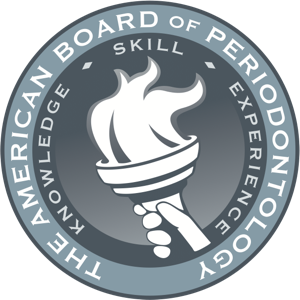
Gum recession is a condition (with several different causes) that can be treated in a couple of different ways. Currently, a receding gum line is often treated with either what is called the “pinhole technique” or the “tunnel technique.” Both have similar characteristics, and generally have the same outcomes and success rate when it comes to treating gum recession. However, there are some differences in the criteria that must be met when deciding which surgery is right for each individual patient, and one method may be more effective than the other depending on a doctor’s prognosis.
Causes of Gum Recession
There are a few different ways that gum recession can occur. Sometimes it is genetically predetermined that a patient has a gum line that will eventually recede on its own. This makes prevention somewhat difficult. The other common causes do have a degree of preventative care you can take, however. Periodontal disease may lead to gum recession if left unchecked. Nevertheless, it is very much preventable at the same time. Brushing after every meal, flossing, rinsing with mouthwash and moderation of sugary foods can help to keep gingivitis and periodontal disease at bay, thus helping to prevent gum recession. Aside from that, trauma from the grinding of teeth or brushing too hard may also lead to gum recession over time. It is advisable that you start using a softer bristle toothbrush or seek medical guidance if you feel you fall under one or both of these categories.
Why Patients Should Consider the Tunnel Technique
The advantage of the Tunnel Technique is that it has a low level of pain and a high success rate with low complications compared to other bone grafting techniques such as “block” bone grafting. However, before tunneling can even be performed, the bone has to be tall or high enough for implants to be placed.
However, tunnel restoration is technique-sensitive and can be particularly challenging for inexperienced restorative dentists. Choosing a highly-skilled and experienced specialist is key for gum recession treatments such as the Tunnel Technique. Dr. Scott Lightfoot is experienced with the Tunnel Technique and has a track record of successful gum recession treatments by using this particular method.
How Does the Tunnel Technique Differ from the Pinhole™ Technique?
As we mentioned before, not every patient is a candidate for any specific gum recession operation. As a result, there is more than one approach to treating a receding gum line. Like the “pinhole” method, the tunneling technique is also an incision-free operation. A periodontist starts by cleaning the exposed root surfaces that have appeared due to gum recession with a doxycycline solution in order to detoxify the surface of the root, and prevent the spread of infections. Next the surgeon will tunnel underneath the gums with a special tool to create space between tooth and gum. This is done so that the skin graft can be inserted more easily into the gums, and less invasively. Once the skin graft is inserted, the gum tissue is raised to cover the exposed roots, and held in place with a suture. Only a single suture is used regardless of how many teeth have been grafted in the same area of the mouth, which is good news for patients who aren’t big fans of stitches. Once healed, the previously receded gums will look the same as the neighboring gum tissue that was not grafted during the operation. It should also be noted that, as with the pinhole method, the tunnel technique is not a cure for periodontitis, but is just as effective in treating a receding gum line.
The Tunnel Technique in Hingham or Norwood, MA
For more on the tunnel technique call our office in Hingham or Norwood, MA or click here. We’re standing by to answer your questions and handle all of your scheduling needs.
Please fill out the form below to request an appointment or call us at 781-812-0740.
Get your free LANAP® treatment guide:
Get your free LANAP® treatment guide:
Here you go! Just click the download link below to download your free LANAP® Information Pack.

